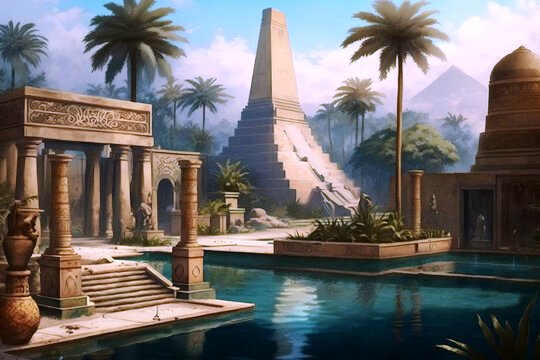Difference between revisions of "Abydos (ruin)"
Tao alexis (talk | contribs) |
Tao alexis (talk | contribs) |
||
| Line 1: | Line 1: | ||
[[File:Abydos (ruin).jpg|right|560px|thumb|]] | [[File:Abydos (ruin).jpg|right|560px|thumb|]] | ||
| − | '''Abydos''', also ''Thinis'', was an ancient city in the emirate of [[Upper Egypt]], near the city of Sohag, in the [[Ottoman Empire]]. Important at the start of the Old Kingdom (c.3200 <small>BC</small>), it was the burial place of kings of the First and Second Dynasties. Nothing significant remains of the city itself and of its famous sanctuary of Osiris, as the ancient city was progressively covered by various later settlements, which were themselves destroyed by war, flooding or time. | + | '''Abydos''', also ''Thinis'', was an ancient city in the emirate of [[Upper Egypt]], near the city of Sohag, in the [[Ottoman Empire]]. Important at the start of the Old Kingdom (c.3200 <small>BC</small>), it was the burial place of kings of the First and Second Dynasties. Nothing significant remains of the city itself and of its famous sanctuary of [[Osiris]], as the ancient city was progressively covered by various later settlements, which were themselves destroyed by war, flooding or time. |
| − | Numerous tombs have been found in the approximate area of the original city; there is a large probability that many might exist still. The most important unfound site is that of | + | Numerous tombs have been found in the approximate area of the original city; there is a large probability that many might exist still. The most important unfound site is that of Osiris' Grave. It's said that a stair was built by which Osiris descended from the [[Prime Material (inner plane)|Prime Material]] plane into the next world, at some time during the Middle Kingdom (2052 to 1778 <small>BC</small>). |
See [[Ruins (range)]] | See [[Ruins (range)]] | ||
Revision as of 23:27, 21 April 2023
Abydos, also Thinis, was an ancient city in the emirate of Upper Egypt, near the city of Sohag, in the Ottoman Empire. Important at the start of the Old Kingdom (c.3200 BC), it was the burial place of kings of the First and Second Dynasties. Nothing significant remains of the city itself and of its famous sanctuary of Osiris, as the ancient city was progressively covered by various later settlements, which were themselves destroyed by war, flooding or time.
Numerous tombs have been found in the approximate area of the original city; there is a large probability that many might exist still. The most important unfound site is that of Osiris' Grave. It's said that a stair was built by which Osiris descended from the Prime Material plane into the next world, at some time during the Middle Kingdom (2052 to 1778 BC).
See Ruins (range)
